Chicken in trousers? What’s next – a cow wearing wellies?
Tens of thousands of you have enjoyed a chicken in trousers from The MERL over the weekend.
A series of amazing doodles in the margins of an old maths book went viral in a Twitter thread, which offered a peek into the world of an eighteenth-century teenager from Biddenden, Kent, as well as an amusing glimpse into the life of a dog (see here for an old blog that also mentions Biddenden). The punchline of this playful thread was a cryptic but comical sketch of a chicken wearing trousers.
So far, so fun, but it seems worth pointing out that this thread also hints at some of the ways in which historians make use of the extraordinary collections that we hold here at The MERL.
Taking a bird’s eye view
Many of our visitors and researchers want to gain greater insight into the lives of animals both past and present.
As the chicken doodle reminds us, one way to understand the point of view of others, whether human or non-human, is to think about the physical worlds they inhabit and give thought to the things they use and wear. Though we aren’t encouraging you to dress up as a hen (unless you want to), what we are saying is that, whilst poultry may not wear eighteenth-century gentleman’s britches, their wardrobe hasn’t always been a simple case of feathery undress.
Domesticated birds are often required to wear identification rings, usually in the form of mini anklets. We have a few examples of these colourful accessories in the collection and the live hens we keep in the Museum’s garden are no exception.

A quick search online will also reveal examples of hens wearing eye-glasses. These red-tinted or solid plastic blinkers were introduced to discourage birds from pecking at their fellow fowl.
A turkey saddle in our collection represents another odd departure in the history of poultry technology. These were placed on hens during breeding season to prevent damage from over-zealous males.
Furthermore, if you wanted to step into the shoes of a goose you could but you’d need to smother your feet in a mixture of hot tar and sand. This was done to maintain foot health amongst flocks of birds being driven to market.
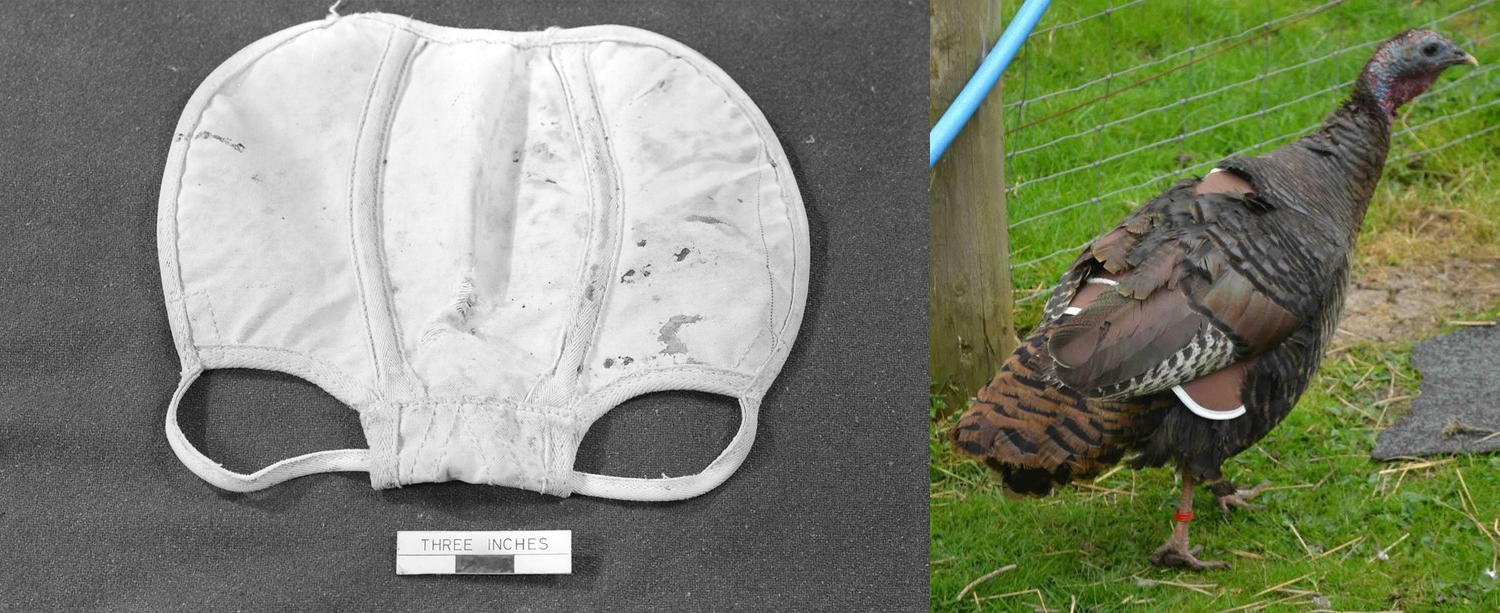
Finally, as the Museum’s artefacts show, odd clothes weren’t limited to poultry and we even have prototype cow wellies, designed by the iconic manufacturers Hunter as a means of protecting an injured cow hoof. While these never went into production they nevertheless show that someone, somewhere probably had the strange job of trying to put gumboots onto a cow.
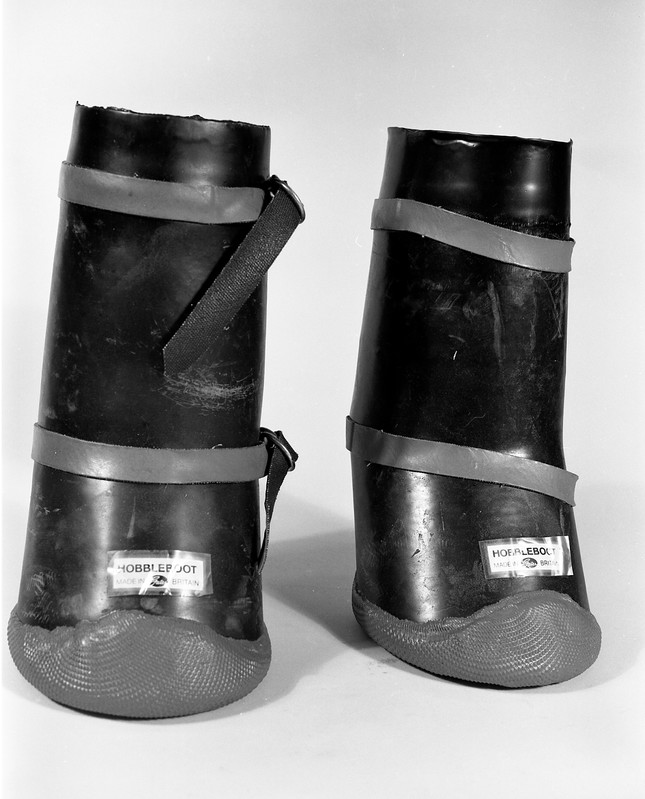
It’s a dog’s life
Thinking about things from an animal perspective is something that many historians are now keen to do.
Indeed, there is far greater acknowledgement that animals—whether farm livestock, pets, or wild creatures—have important stories and that revealing these can provide valuable insight. Like the doodled dog (and the things it may have seen), we can think about their daily routines, the biographies of their lives, and how their worlds were intertwined with those of people.
We often pigeonhole our animals into groups, imagining them in terms of their collective nouns—flocks and herds—and not as individuals. By contrast, for the kinds of animals we commonly keep as pets we may jump to seeing them as singular and characterful.
Our spotty dog is a great case in point. The eagle-eyed amongst you may have noticed that the markings on our dog differ in some sketches, implying a slightly different story involving at least two hounds (perhaps the two allowed greater freedom in the hare-coursing or rabbit-chasing image). So just as young Richard imagined a chicken wearing human clothes, we can slip easily into imposing our own ideas and projections onto animals in the historical record.
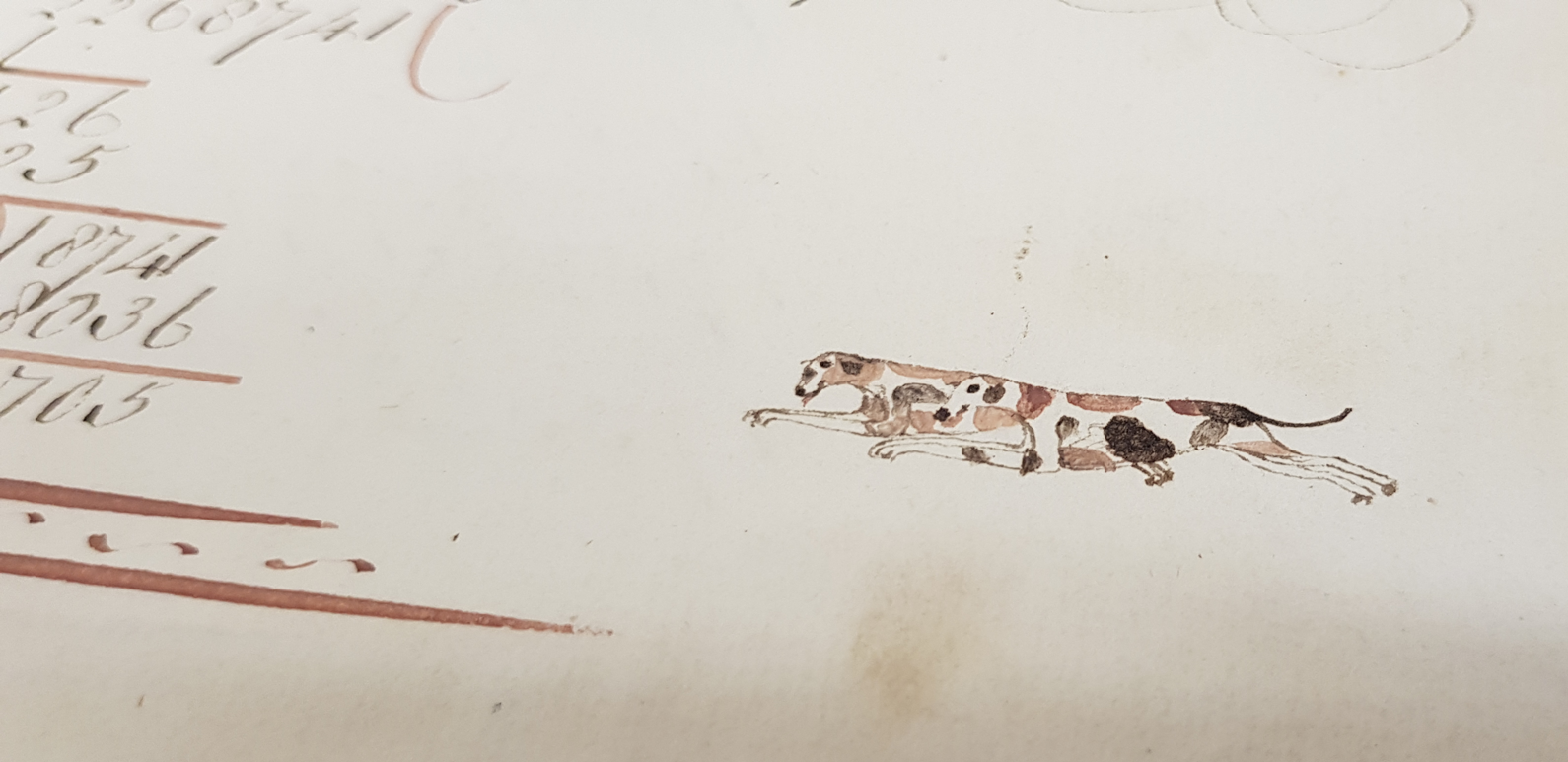
As hen spectacles and tar shoes show, things worn by animals are almost always imposed upon them. The collar round the neck of one of our canine companions—the one with the sad expression on its face—is no different. This invites us to question the extent to which animals shape their own lives and to what extent their lives are shaped by us. Trying to reconstruct the life story of a dog, of two dogs, of a pack of dogs from such evidence is challenging but it allows us to think about whose histories we tell and how we seek to reveal them.
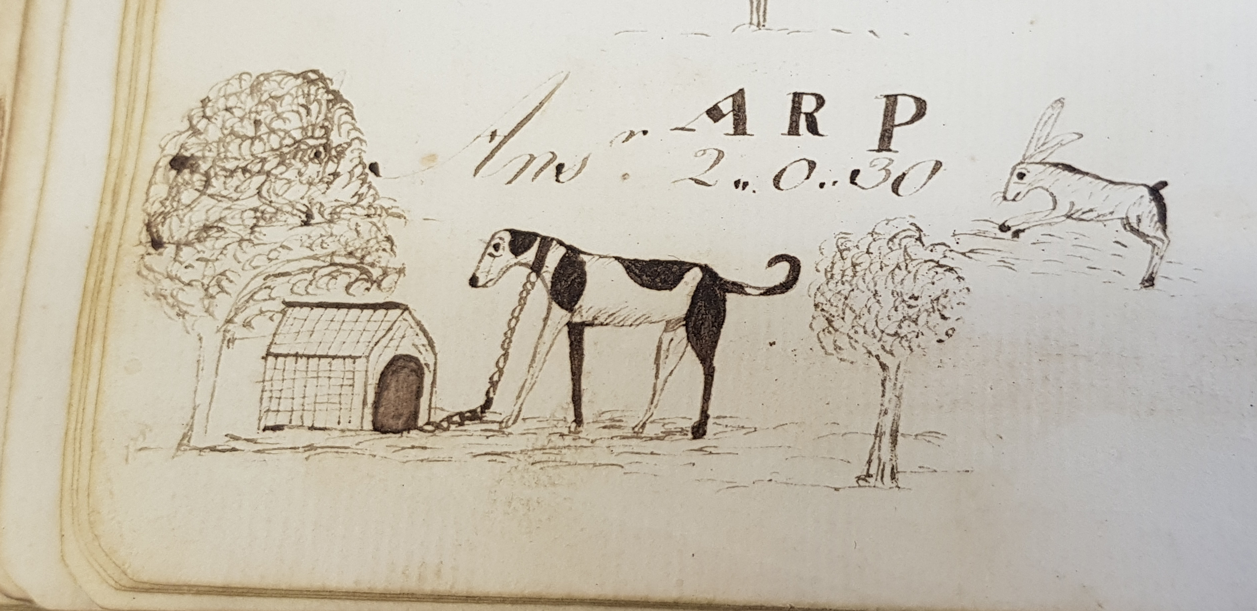
In a Museum all about rural history, War Horse is a useful literary example of an animal-centred story. Michael Morpurgo’s novel famously tells the tale of a horse requisitioned from a farm and sent to serve the British Army of the First World War. Our rich archives hold countless examples of animals who served in similar ways, both on the home front and in military contexts, but few of these have yet been revealed in such a powerful animal-centred biography. Hopefully this will change.
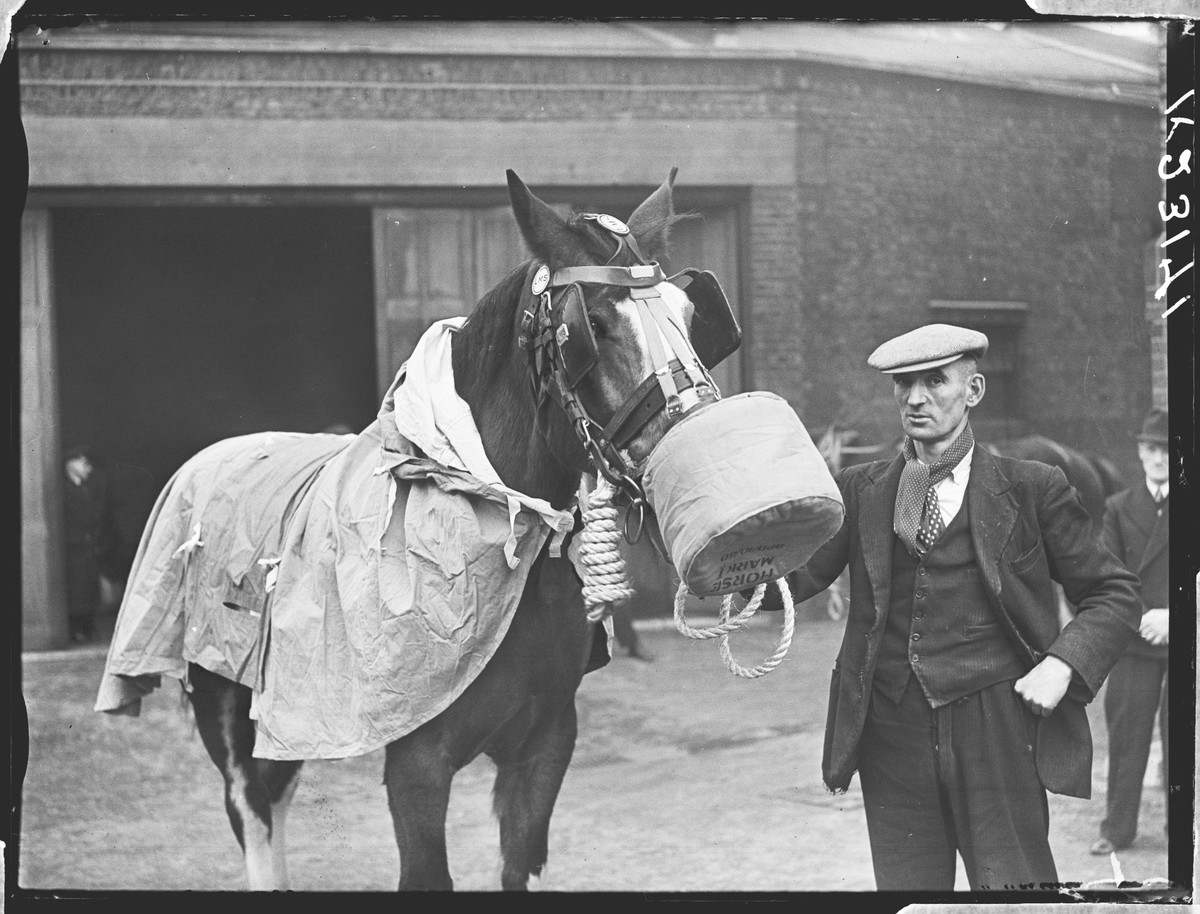
In one small example, we are supporting the work of PhD student Felicity McWilliams (based jointly at Kings College London and The MERL). She is examining the role that heavy horses occupied on farms during the mid-twentieth century, when machines were becoming increasingly common. Alongside other perspectives, Felicity is exploring this history ‘from below’, immersing herself in personal accounts connected to farm horses and tractors. She would be the first to admit that her interests are niche, if not downright nerdy, but the wonderful thing about her approach is that, like the family-focused, animal-centred, and marginal stories that our maths book can reveal, hers is an attempt to give weight to the lives of the horses, the people who cared for and worked with them, and the machines that came to replace them. She and some fellow students have formed the Animal History Group to help further these approaches.
Life on the margins
One final strength that runs through our maths book thread is its focus on the doodled distractions of the author rather than the mathematical purpose of the original jotter. All too often our histories set out to emphasise a central narrative but, thankfully, many now focus on the hidden histories to be found on edges, in marginalia, and through the less straightforward aspects of the evidence that survives in museums. This is a big challenge for us as we tend to record and describe things for what they are. In other words, the quirkier something sounds – say a ‘turkey saddle’ or a ‘cow boot’ – the more likely it is to stand out as something worth taking a look at. But, when it comes to an old maths book that just happens to have a few drawings in it, we rely on the seasoned eyes and abilities of our archivists, researchers, and audiences to bring such gems to light, revealing their richness, value, and individuality. In other words, we need people to look carefully and to understand that individual things can tell lots of different stories.
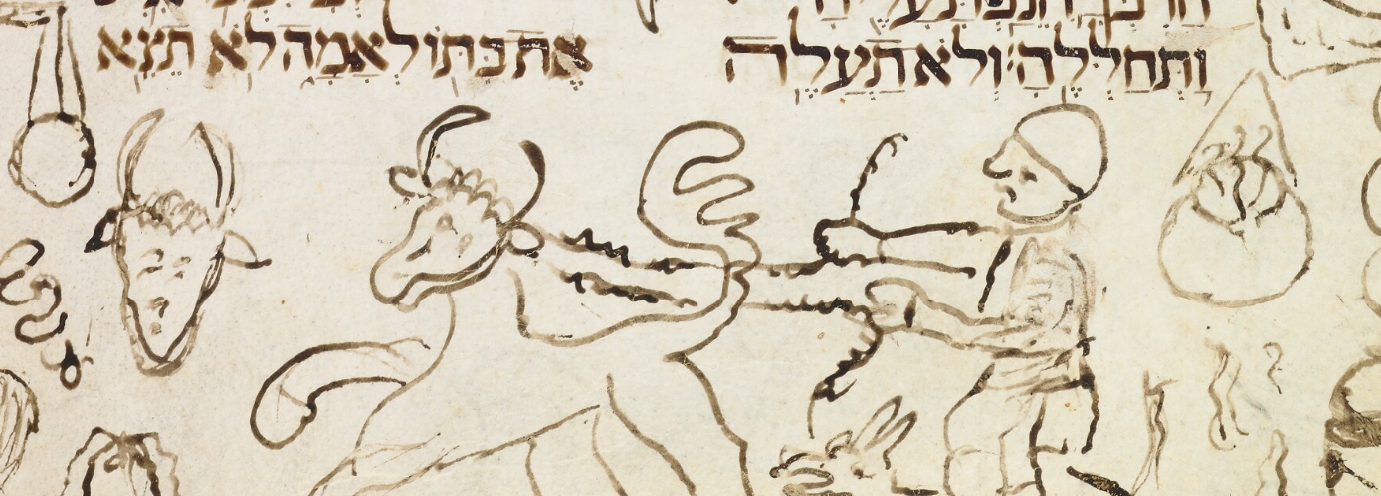
Examining the life story of one person through a series highly quirky and individual sketches that he drew resonates powerfully with us now because it is through these same personalised interactions that we create and shape the stories of our own lives in the present.
And for those of you fearful that the digital age has put an end to the kinds of marginalia and informal records of our lives so brilliantly revealed in this eighteenth-century maths book, fear not. Social media is awash with highly personalised engagements and commentaries on the world. You only need look through the responses to this single twitter thread (and the fact that a ready-made chicken-in-trousers gif was available for us to shamelessly retweet) to see that the messy complexity of our world is still being shared and that we are all still doodlers at heart.
Watch this space for more on marginalia in future blogs.
Written by Dr Ollie Douglas, Curator of The MERL Object Collections.
